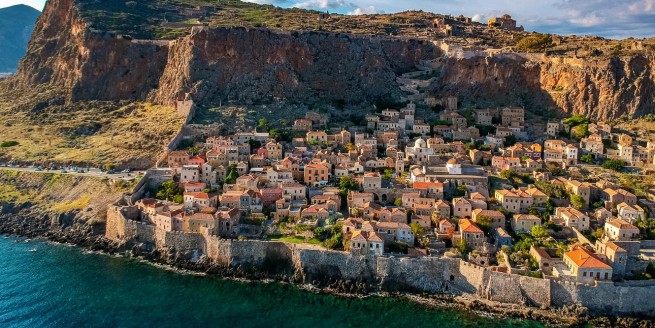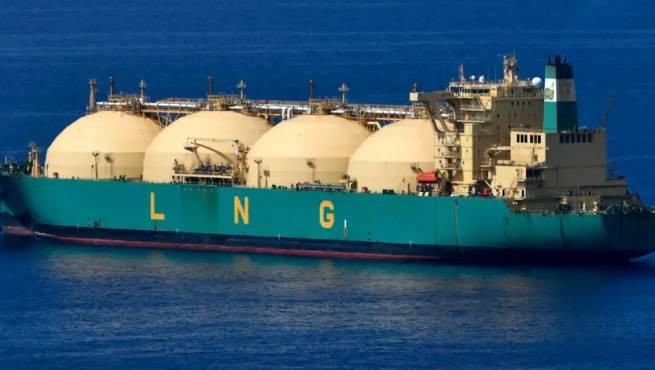The “vertical corridor” from Alexandroupolis is intended to displace the Russian Turkish Stream from South-Eastern Europe, replacing the Ukrainian transit, which ends in 2024.
Large markets in the west EU for Gazprom have already been lost, but the countries of South-Eastern Europe continue to receive pipeline gas from the Russian Federation in transit through Ukraine, along one of the two branches of the Turkish Stream. But this region is also actively preparing to replace these supplies. The most important alternative to gas pipelines coming from the east is called to be the “Vertical Gas Corridor” to supply the region from the south, from LNG terminals in Greece.
Greece, Bulgaria, Romania and Hungary are already participating in the project. And recently Moldova officially joined it, reported press service of the Ministry of Energy of the Republic – the corresponding agreement was signed in Athens on January 19. The message notes:
“After the accession of Moldova and Ukraine, the “vertical corridor” will follow the route of the Trans-Balkan pipeline, from Ukraine to Greece in the reverse direction. The concept of a “vertical corridor” is not a traditional project of a separate gas pipeline, but a system connecting existing national gas networks and other gas infrastructure to ensure gas transit and improve energy security.”
Alexandroupolis will supply gas to the entire Balkans, and the key word here is Alexandroupolis. This is the name of the Greek port on the Aegean coast, writes DW, also – Alexandroupolis – is the name of the regasification vessel, which arrived at this port on December 17, 2023. In the coming weeks, it will begin receiving liquefied gas tankers. Previously, it was also an LNG tanker belonging to one of the Greek shipping companies. But last year, in ten months, it was converted at a shipyard in Singapore into a floating storage and regasification unit (FSRU). The terminal is capable of pumping 5.5 billion cubic meters of gas into the Greek gas transportation network annually.
Initially, the LNG terminal in Alexandroupolis, in the north-east of Greece, near its borders with the European part of Turkey and Bulgaria, was conceived not so much to supply the domestic Greek market, but to work for export, for supplies to the countries of South-Eastern Europe. To this end, at the end of 2015, a final investment decision was made to lay the Interconnector Greece-Bulgaria (IGB) pipeline to connect the gas networks of Greece and Bulgaria. The implementation of this project, which received political and financial support from the European Union, was greatly delayed for various reasons, but in October 2022 the IGB went into operation.
The decision to build this connecting gas pipeline was preceded in February 2015 by the creation under the auspices of the EU CESEC (Central and South Eastern Europe Energy Connectivity) – an association of Central and South Eastern European countries that decided (strongly impressed by the Russian annexation of Crimea) to accelerate the creation, expansion and modernization cross-border gas transportation infrastructure to diversify gas supply in these two regions. In other words, deciding to reduce their dependence on Gazprom and Russia.
It was then that the “Vertical Corridor” project began to take concrete shape. His idea, formulated at the end of 2014 first by Greece, Bulgaria and Romania, was then supported by many other countries within and outside the European Union. The essence of the project is to ensure the technical capabilities for the constant supply of the entire Balkan Peninsula, as well as Hungary and Austria, with the natural gas that will flow to Greece from Azerbaijan via the TANAP-TAP pipeline corridor and from around the world to Greek LNG terminals.
And so on January 19, 2024 in Athens, at a meeting of the CESEC group at the ministerial level, Slovakia, Moldova and Ukraine joined the Vertical Corridor project. As a result, Ukraine will be able to become not only a consumer of gas arriving in Alexandroupolis, but also a transit country on the route of fuel from Romania to Central Europe, as well as provide gas storage services to participants in the “Vertical Corridor” in its extensive underground gas storage facilities.
The group’s immediate ambitious goal is to systematize by July, a year ahead of schedule, current data on capacities at the connecting points of national gas transmission systems. Then, taking into account demand, it will be determined where and to what extent it is advisable to expand the existing infrastructure, according to the Greek-Bulgarian company Gastrade, operator of the terminal in Alexandroupolis. Or rather, the operator of two terminals, since eight kilometers east of Alexandroupolis the regasification vessel Thrace (Thrace) is planned to be put into operation in 2025. Their total capacity will be 11 billion cubic meters of gas per year, and Gastrade plans to export 70% of this volume – primarily to Bulgaria, Serbia, North Macedonia, Romania, in the future – to Hungary and Austria, and now also to Slovakia and Moldova and Ukraine.
For comparison: the capacity of the second line of the Turkish Stream, which is called the Balkan Stream and goes through Bulgaria and Serbia to Hungary, is 15.75 billion cubic meters per year, so two FSRUs near Alexandroupolis can give this Russian gas pipeline a very significant competition in terms of the entire Balkan Peninsula. Moreover, Greece is not going to stop at these two new LNG terminals.
In 2025, regasification vessels are planned to be put into operation in Corinth, Thessaloniki and Volos, so that the total capacity of these five FSRUs will be 22.5 billion cubic meters per year, which is four and a half times higher than the annual gas consumption in Greece itself, the German economic newspaper points out. Handelsblatt in an article entitled: “How Ukraine is going to completely get rid of Russian gas.”
Let’s add to this the operating Revithoussa LNG terminal with a capacity of 5.3 billion cubic meters per year on the island of Revithousa near Athens, as well as the TAP gas pipeline with a capacity of 10 billion cubic meters per year (in the future it can be doubled), through which Azerbaijani gas goes mainly to Italy, but also supplied to Greece and Bulgaria. If we sum up all these capacities, it becomes obvious: in 2027, when the EU is going to finally abandon Russian gas, the “Vertical Gas Corridor” may well not only guarantee gas supply throughout the Balkan Peninsula, but also ensure supplies to neighboring countries, even if then Hungary or Slovakia, Austria or Moldova, Ukraine.
Although the project is not designed to fully supply such a large consumer of Russian gas in Central Europe as Austria. The Austrian energy company OMV understands this very well, where they are already in full swing preparing to stop Ukrainian transit of Russian gas at the end of 2024. Austria is relying on pipeline gas supplies from Norway via Germany and from Algeria via Italy, as well as LNG imports mainly through German and Italian terminals. But the company probably won’t refuse lucrative deals with terminals in Greece.







More Stories
Greece: growth in deposits from households and businesses in March 2024
EU employment record: Greece "stuck" in a low position
“Bonus” of 300 euros for the long-term unemployed